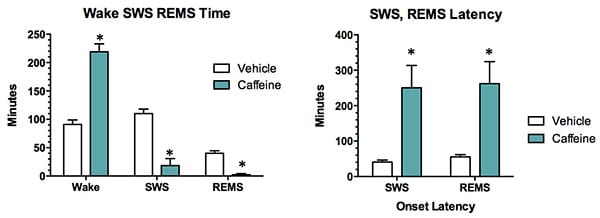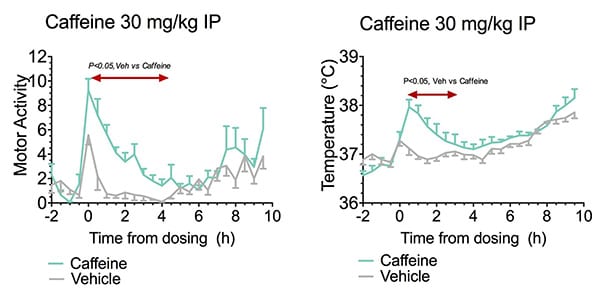Sleep - Wake and Motor Activity
Discover how Melior’s unique phenotypic screening platforms can uncover the untapped value of your candidate therapeutic
Cortical EEG activity in rodents can be used to characterize basic behavioral states such as sleep / wake activity, as well as evaluating interactions between drugs and environmental factors such as fatigue.
Rats or mice can be chronically implanted and, depending on the treatments, can be tested repeatedly for several months. General motor activity and body temperature can also be monitored by implanted transmitters.
The effects of caffeine on wake, sleep (SWS), and rapid-eye movement (REM) sleep activity, and motor activity and body temperature are illustrated below. See also Cortical EEG Frequency Analysis.
The effect of caffeine (30 mg/kg IP) on wake activity in rats is shown above. Rats (9 vehicle, 6 caffeine) were evaluated for 24 h. The percent time spent awake is shown for each half-hour interval for 10 h post dosing. * P< 0.05, unpaired t-test.
The mean time spent in wake, slow-wave sleep (SWS), and rapid-eye movement sleep (REMS) for the first 4 h post dosing is shown in the graph above left. On the right, the time to onset of sleep and REM sleep is shown.
Caffeine increased motor activity for 4 h and body temperature for 2 h post dosing as shown above.






 Interested in running a Sleep – Wake and Motor Activity study?
Interested in running a Sleep – Wake and Motor Activity study?